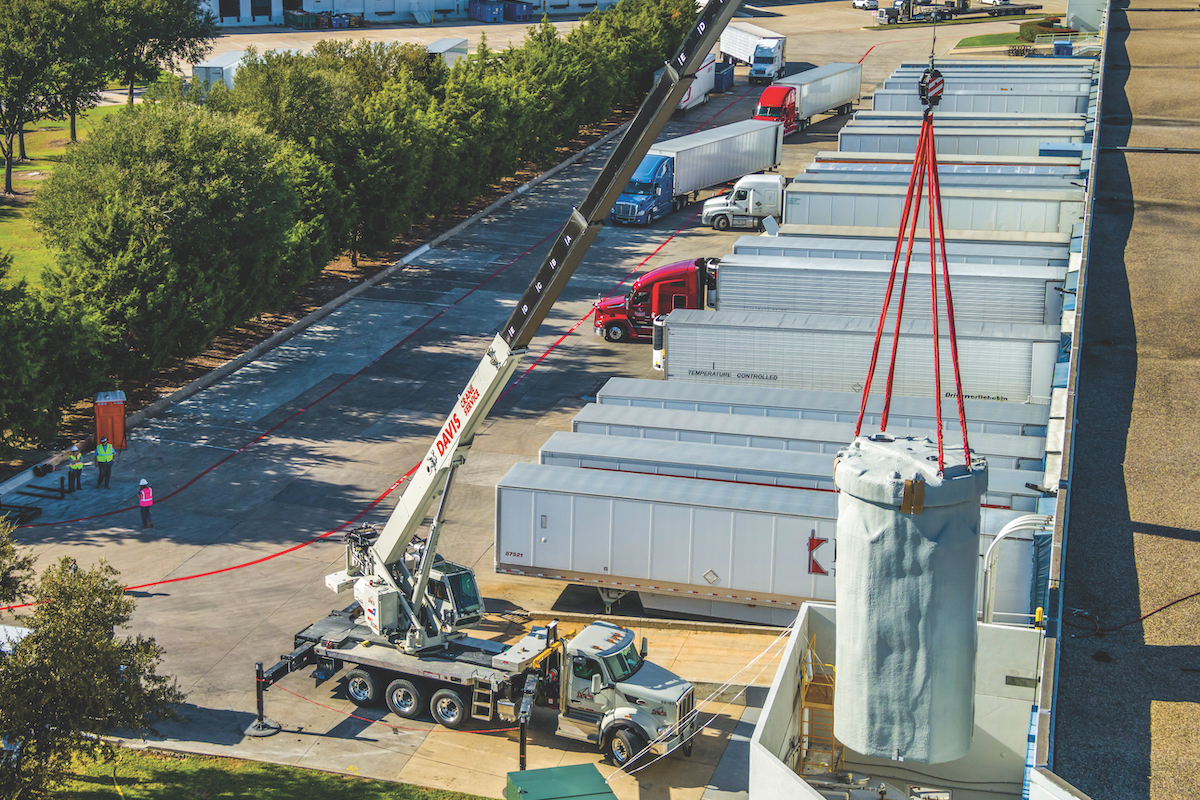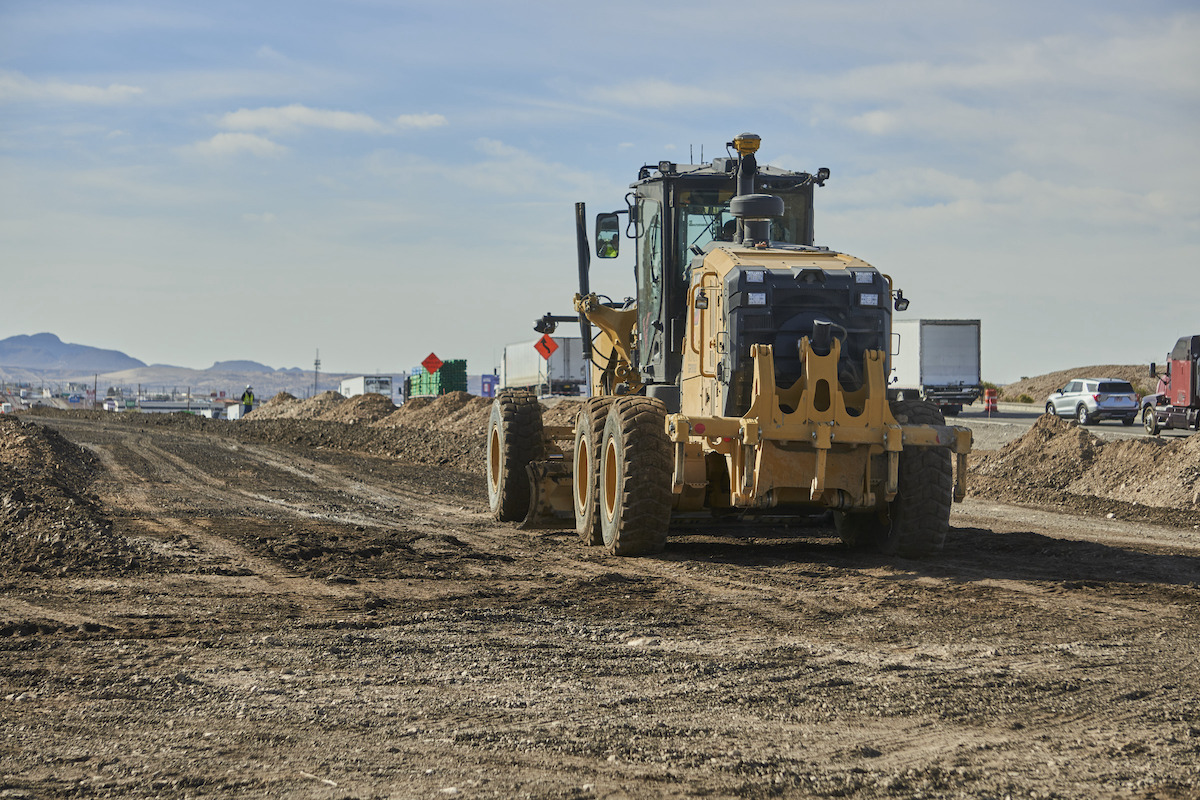“The focus on verification has been a regular thing for us for some time now, usually addressed through topos gathered after most of our pours,” he said, “but we’ve been looking for a way to both improve and streamline that process. For a while, we were seriously considering purchasing a drone, but felt that it didn’t offer us the level of accuracy that we needed.”
TAS was also considering a standalone scanner and had, in fact, tried using them in the past. However, the fact that they were not able to set up on a control point with the instrument and then still had mesh data together to make it work did not help with efficiencies. Fortunately for them, they were made aware of a much better way to solve the verification issue.
“We are currently working a mixed-use 38-story high rise in Houston called ‘The Allen,’ and on a job like that, there are a lot of trades coming in after us,” he said. “So, it’s not uncommon to see piles of sheetrock or other heavy equipment on a slab that we’ve recently poured. Post-tensioning of a slab alone can also change it, as can inadequate post-shoring. All of that is out of our control.”
In addition, he said, soil conditions such as those found in Texas, can cause a slab to heave as much as 3 feet as moisture increases, affecting its integrity. “So, we need verifiable proof – and documentation – that the work was within tolerances when we stripped the deck. Having that saves us the time and cost of going back to do any sort of re-work – that’s a huge benefit.”

| Your local Bobcat dealer |
|---|
| Central Texas Equipment |
| Nueces Power Equipment |
| Air Compressor Solutions |
| Romco Equipment Co |
“Using that approach, we would get a point with data every 10 feet,” said Duane Collier, TAS’s Director of Field Engineering. Unfortunately, that leaves areas in which no elevational data is available. What was suggested to us was something that could not only serve us much better – it could also save manpower.”
The technology presented as a solution combines the strengths of a fully-featured total station with those of a compact laser scanner. The Topcon GTL-1000 is designed to provide easy, single-operator layout and scanning. One operator can draw upon the inherent strengths of the total station, specifically prism tracking and accuracy, to lay out points – even in challenging construction environments – and, with the press of a single button, initiate a data-rich scan. As a result, rather than having a limited number of points gathered from a 10-foot by 10-foot grid, the user has millions of points at their disposal and available for subsequent use.
“Having one man come out to scan the slab, process all the information and have it quickly accessible moving forward is a great benefit,” said Black. “If, six or eight months down the road, a general contractor comes to us claiming that we need to level up some existing work we’d done, we have proof that, when we turned the job over to them, those floors were level. That’s invaluable for a company like ours.”
“On the second day, however, we would bring in a third person to help create the Floor Flatness/Floor Levelness (FF/FL) report,” said Edgar Valenzuela, a TAS Office Field Engineer. “Now, with this new instrument, one person can cut the time of a conventional topo in half and we no longer have to do the extra day of time and labor for that FF/FL report. That translates to a savings of around 60 percent in labor costs per pour.”
Having a wealth of information at their disposal carries with it a number of additional benefits. Though scanning subgrade is not a commonplace occurrence for TAS, they have been known to do so on some larger projects – and have been glad they did.

| Your local Sennebogen LLC dealer |
|---|
| ASCO Equipment |
| WPI |
“In such cases, we scan to confirm that the elevation is where it needs to be,” said Valenzuela. “But having that data available has made us popular with many general contractors. If, for example, a dirt contractor is suspected of failing to provide material according to spec, that GC can come to us and say: ‘You already have the info, send it to us.’ Having that accountability has been good for both parties. And doing things this way has resulted in us getting probably 30 percent of our work this year from referrals. People are recognizing the value of what we have to offer through this data.”
“Once we got out of the ground and started pouring elevated decks, progress has been steady,” he said. “When we got to the eighth level, where the typical floors start, we were able to utilize a tableized form system which allows us to streamline the deck pour process. We do our first deck pour on Monday and pour vertical that afternoon. Tuesday morning we will stress the cables and once that’s done and everything is within spec, we fly our tables, put rebar down and are ready to start again. We do pour two on Wednesday and it’s the same scenario: pour it, stress the deck the next day, fly the tables and so on. It’s a pretty quick turn.”
That last statement might be a bit of an understatement. According to Black, while The Allen project was bid as a six-day turn – one floor completed every six days – they are bettering that by a nice margin.
“We are currently doing a floor every five days,” said Black. “The end result is that we will probably finish one month ahead of schedule and pick up any bonuses that were in the bid package. While that’s great for us, finishing early also makes for a satisfied customer and owner; in the end everybody wins.”
“That’s really key,” said Black. “It’s not just structural decks we’ve poured that need scanning. Other work can include light commercial, industrial super flat floors, and more – it’s all important. In fact, on warehouse floors, it is even more critical because of the impending heavy forklift traffic and shelves that will be stacked to the ceiling. So, Walter can cover a lot of ground in a short period of time, ensuring solid verification on each one.”

| Your local Wirtgen America dealer |
|---|
| Kirby-Smith Machinery |
| Nueces Power Equipment |
Zuniga said that, despite the wealth of data it produces and the value it holds, operating the new system was easy to grasp, even for someone not well-versed in scanning and surveying technology.
“The GTL was my first experience with technology of this type, but I found it very simple to use and understand,” he said. “It looks like a lot to take in at first, but at the end of the day, it is the same data we would get with any topo – just a whole lot more of it. The GTL allows me to scan and then, within minutes, move on from that position, allowing other workers to come behind me. Then, working from my vehicle and still onsite, I can generate an FF/FL report and have it to the GC in minutes.”
“It’s really all about having the amount of data available to verify any and all of our work,” he said. “Although, in the past, we wouldn’t even send that data until it was needed. Now, we find it’s better to present the GC with it right out of the gate – they love it. They appreciate the info and know the value it holds. That’s a powerful tool for us.”
Photos courtesy of TAS Concrete Construction











































































